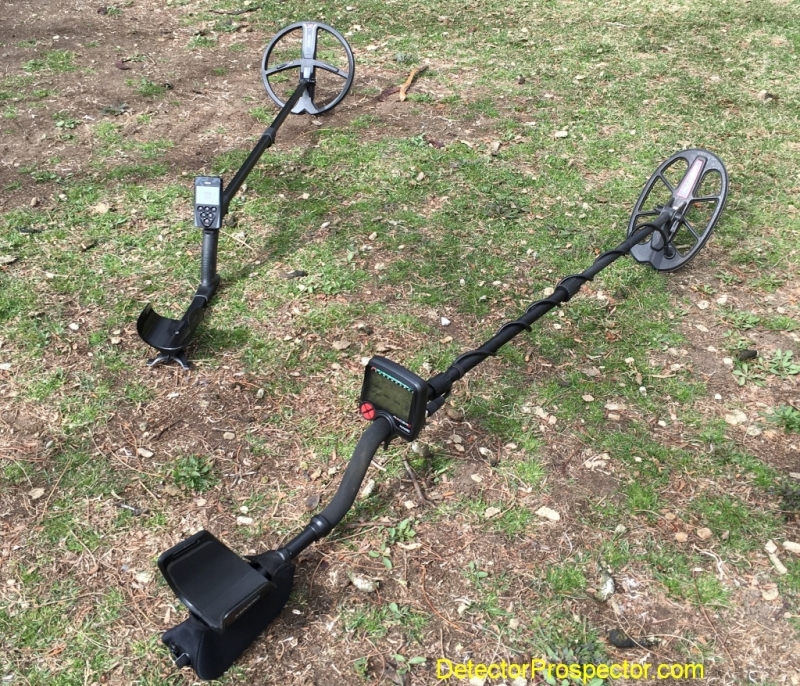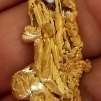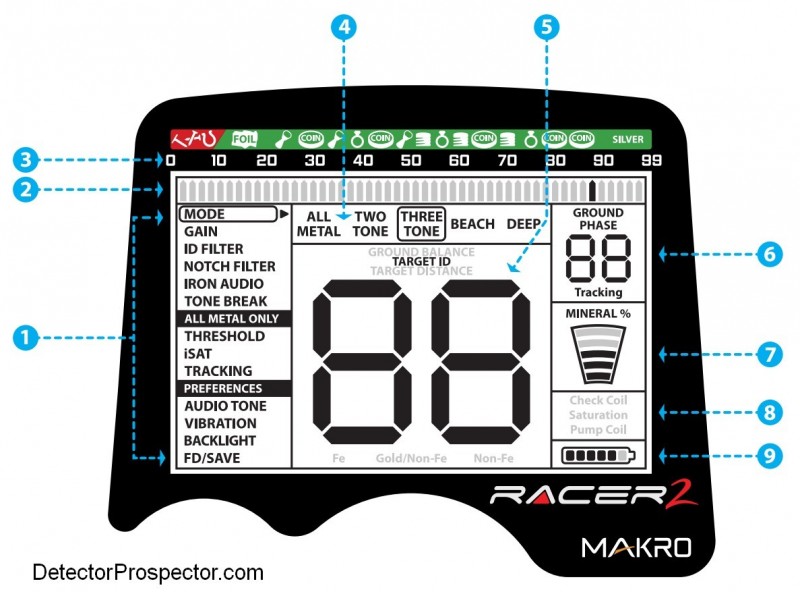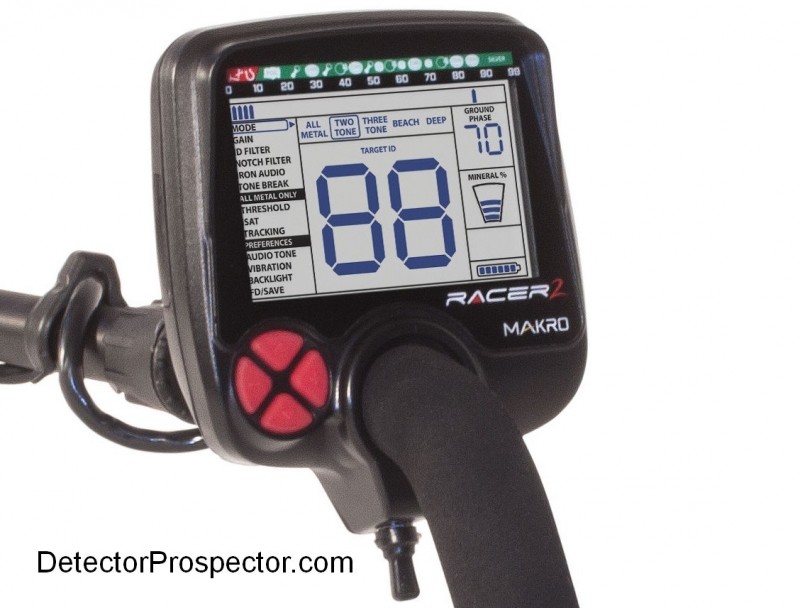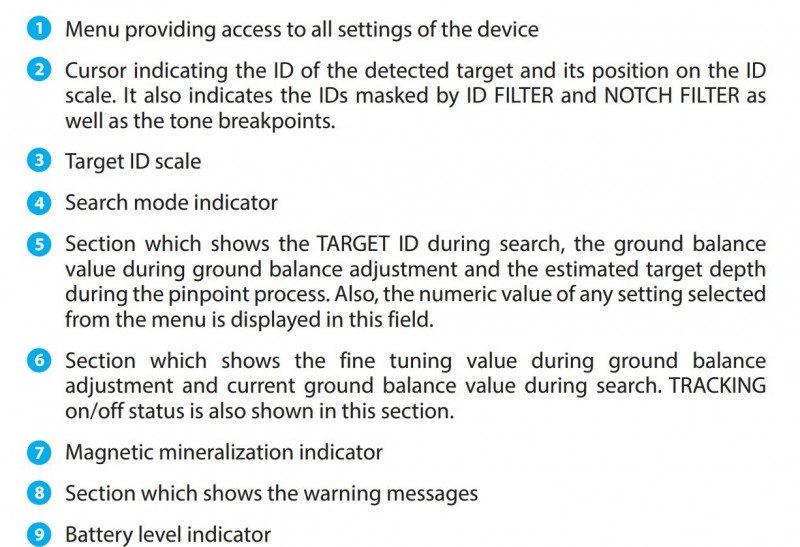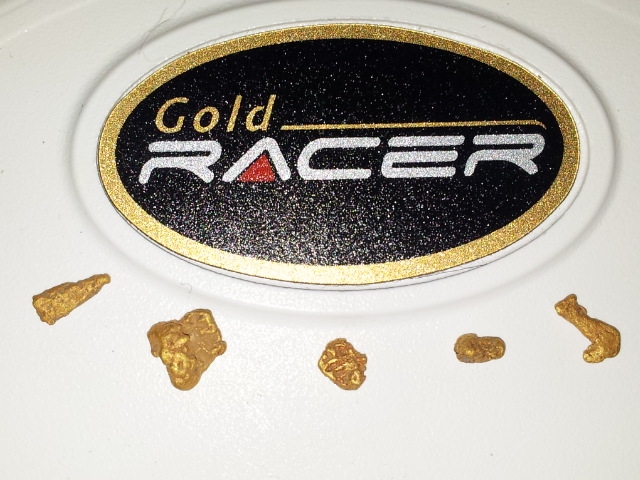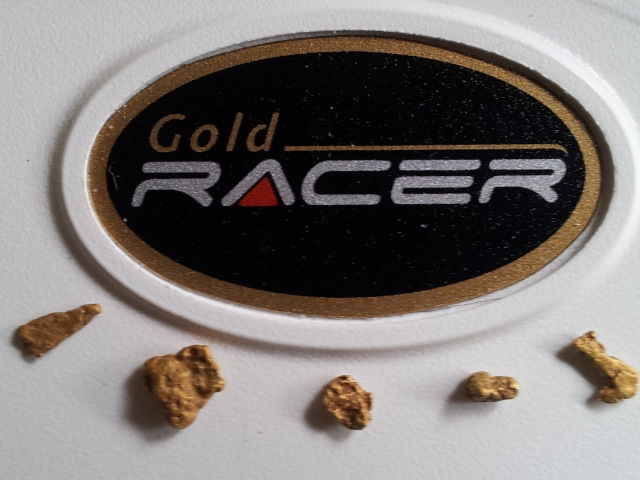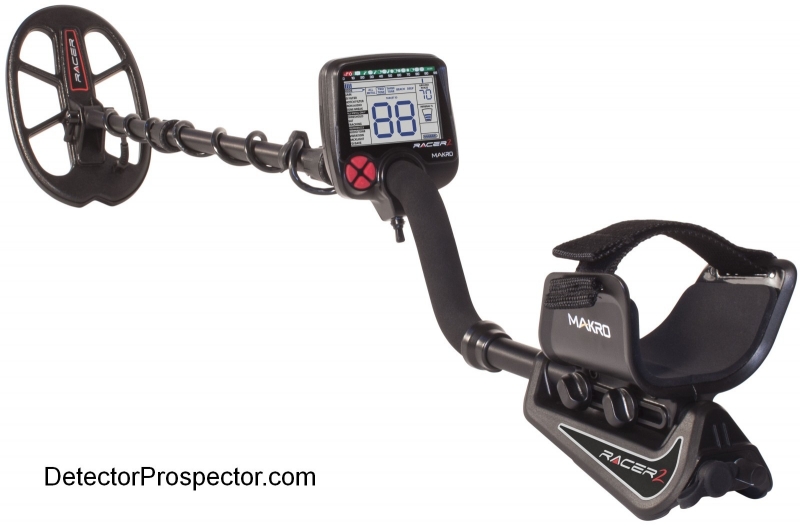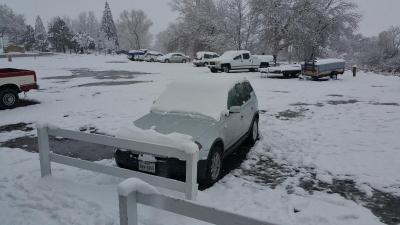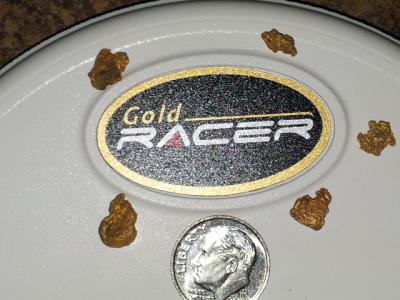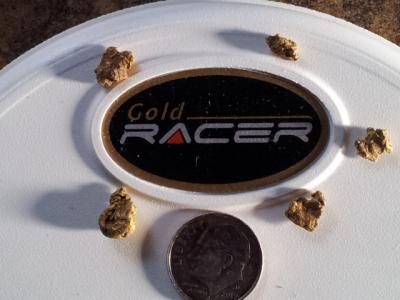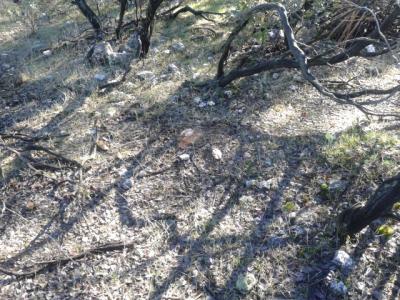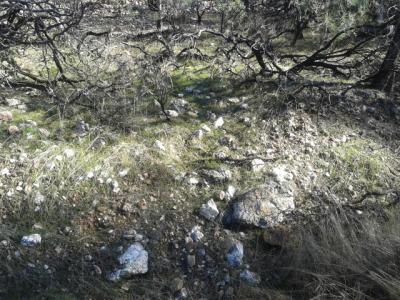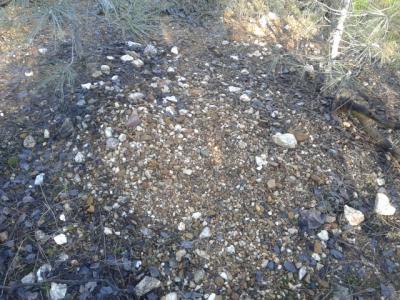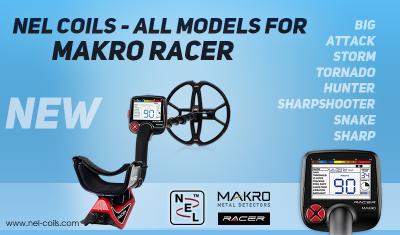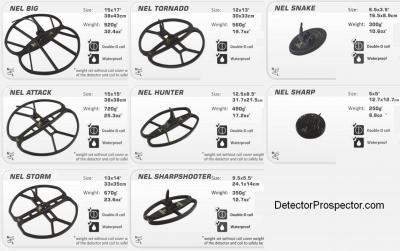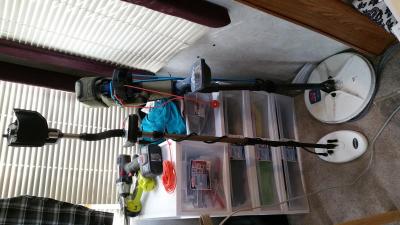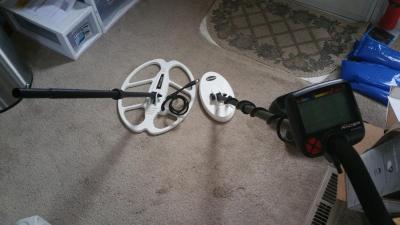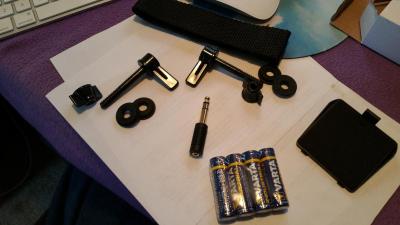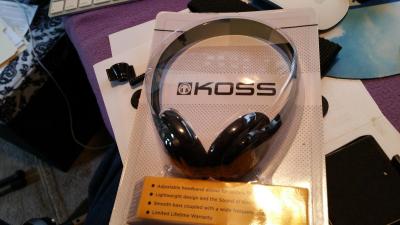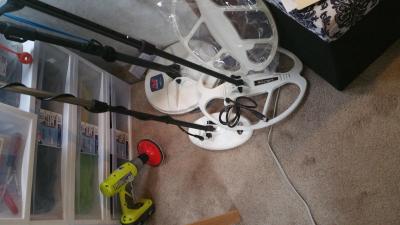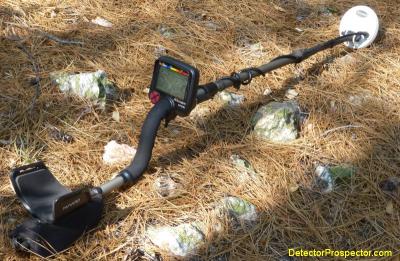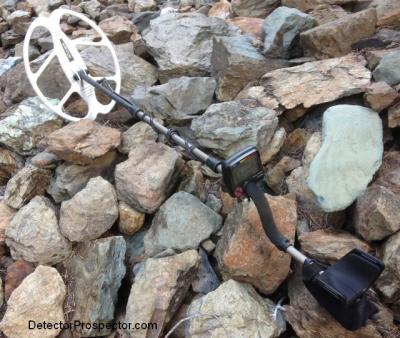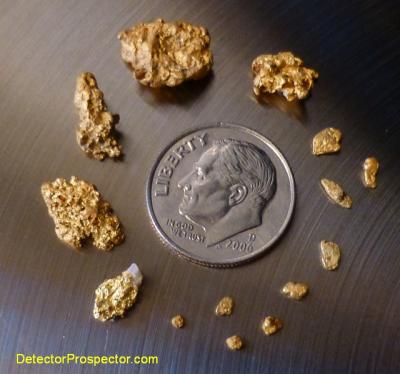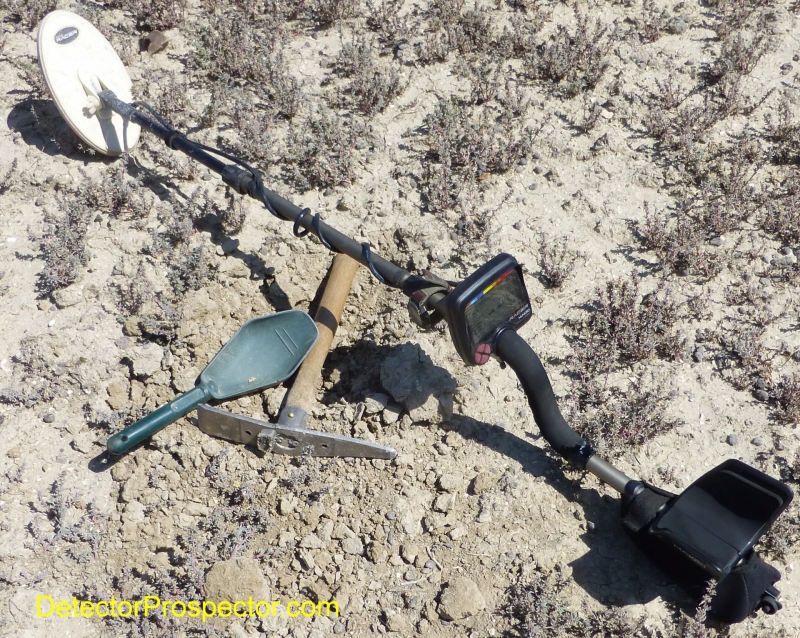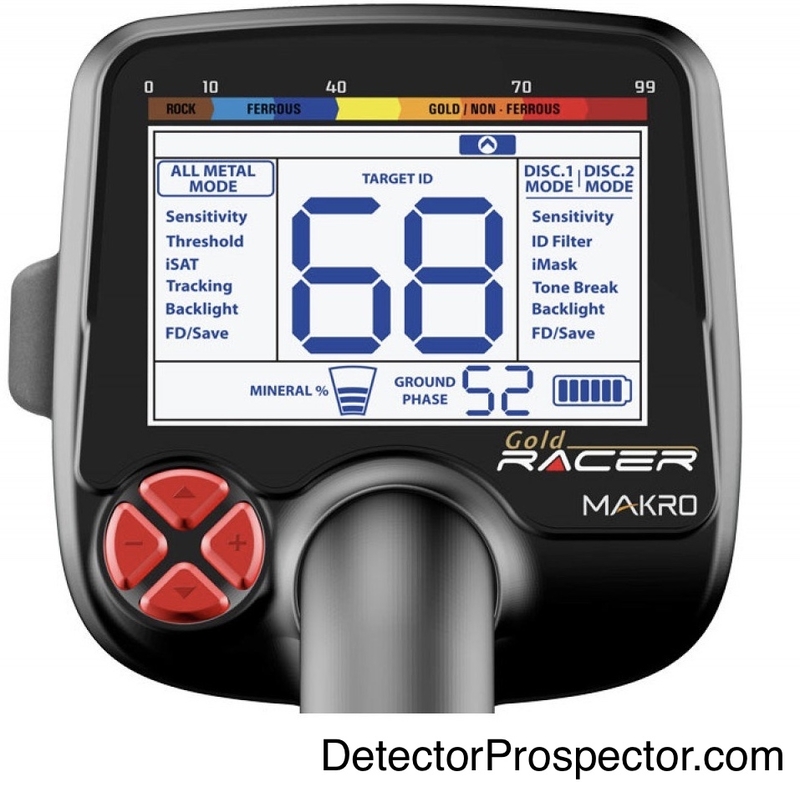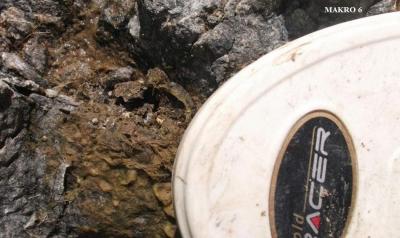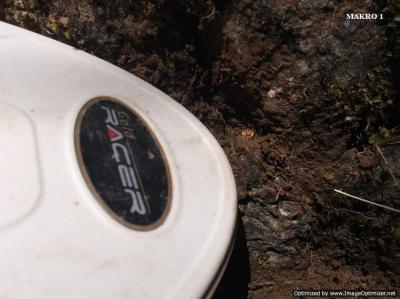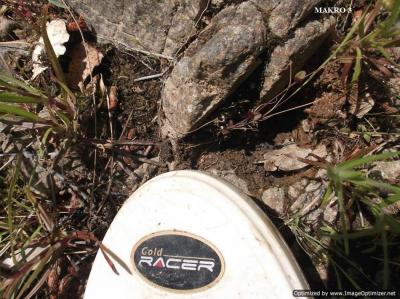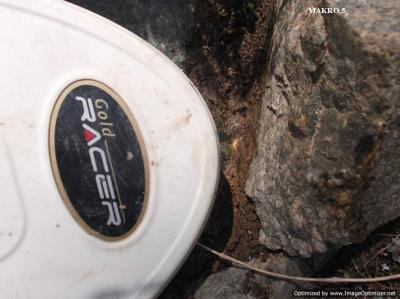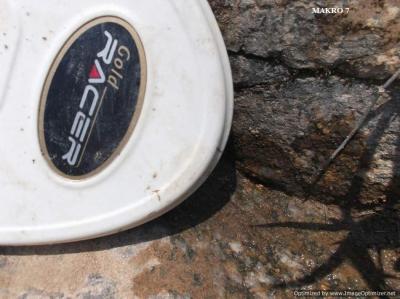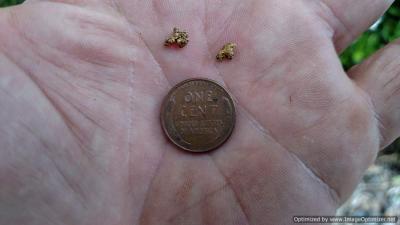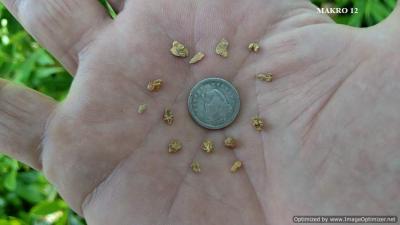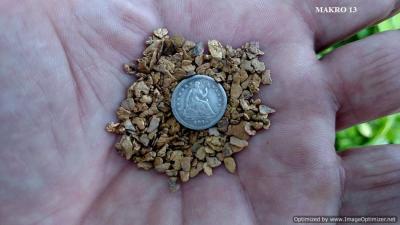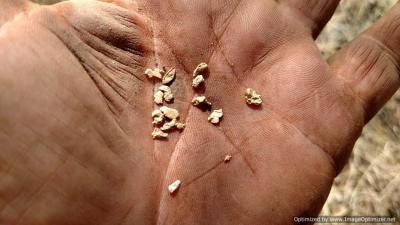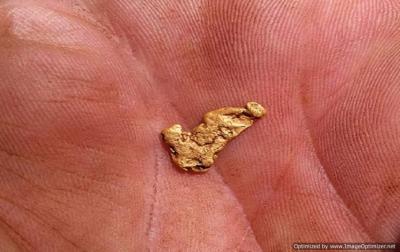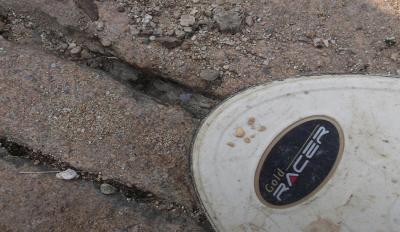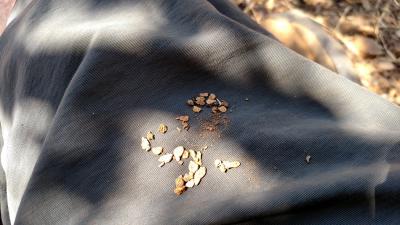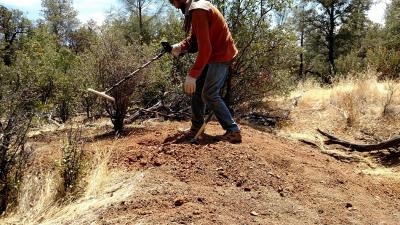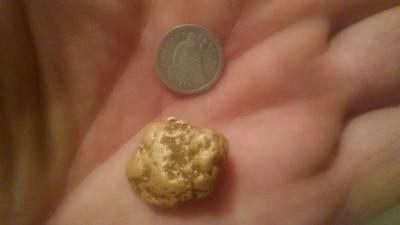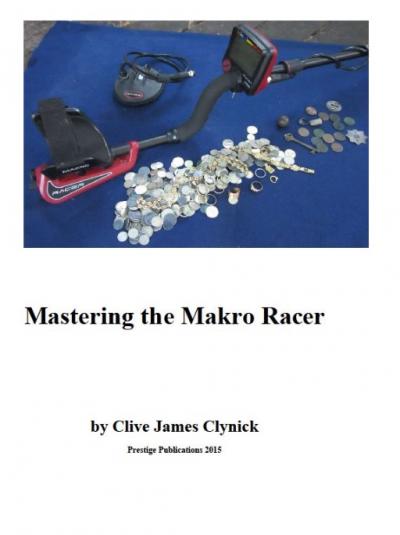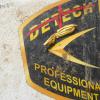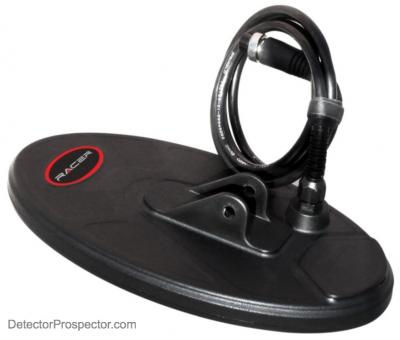Search the Community
Showing results for tags 'makro racer'.
-
-
Sounds great Steve (Makro Racer display as described here)....if your a computer programmer and like buttons.... :) I am just a simple nuggethunter. It's coming down real soon for me to pick the one vlf out of all these new ones that have been coming out last few years. My ole 4500 is my primary and has served me well, but lately my sites and opportunities to hunt gold have got me endless massive tailings piles stretching miles. I am finding the PI a bit heavy and a need for a vlf to be more effective and speed things up so I am not digging ferrous so much. My two choices as of today.....ForsGold+ or the Makro Racer....I would love some advice from those who like simplicity but a very effective on tailings...if you were to choose which detector would you pick for this specific job ?
-
I have used many metal detectors over the years, and right now I have to say that the new Makro Racer 2 has perhaps the easiest to understand, best laid out, most practical display and menu system I have ever seen in a top end detector. Now, you can sure say you hunt by ear and do not need a screen and I get that, but if we are going to put a screen on a detector, then let's do it right. Simple detectors with few functions are easy to make screens for - there is not much you need. But even then just the basics are often wrong. Machines that feature target id numbers, what is the thing you will most look at on screen? The target id numbers! Yet these are often way too small or off to the side as if an afterthought. The Makro Racer 2 id numbers are huge, much larger than on the original Racer and Gold Racer, which are already good sized. The number 88 display in the diagram above is fully 1.5" x 1.5" in size in real life. Other machines have some pretty big numbers but I think this sets a record as I can't think of any machine with larger id numbers on screen though some are close. Makro Racer 2 LCD display and controls Makro Racer 2 screen layout Makro Racer 2 screen and control descriptions The number can be the ground balance number, target id, or depth reading. You get a text display just above the number confirming which it is. Below the numbers are three zone references, Fe, Gold/Non-FE, and Non-Fe, that are used to set tone breaks and audio for the three main zones or bins as they are sometimes called. Another basic feature lacking on a lot of machines - the meter backlight. With the Racer 2 you get off, intermittent, or full time backlighting, and it includes the translucent red control buttons. The control ranges between 0-5 and C1-C5. At 0 level, the keypad and display backlight are off. When set between 1-5, they light up only for a short period of time when a target is detected or while navigating the menu and then it goes off. At C1-C5 levels, the keypad and display will light up constantly. I do not know of anyone doing a better backlight. The right side of the meter is informational - ground phase (ground balance number), mineral % (ground magnetite content), coil warning notices, and a six segment battery meter. Across the top below the 0 - 99 reference sticker, is a series of 50 "bullets" each of which covers 2 target id numbers. Open bullets (which appear gray in the diagram but are invisible in real life - see top photo) indicate accepted target id numbers. Blacked out segments show what discrimination and notch setting you have programmed in a single quick glance. When a target is detected, the big number on the display will be mirrored by one or more of the bullets flashing dark. The four control buttons are simple as can be - up and down takes you through the left hand menu area. Right or left lets you set each function selected by going up and down. The menu is basically the entire feature list just laid out right there for you to see. You want to know what this machine can do, just look at the screen. Most other machines you have no clue without reading the owners manual or at least pushing buttons to see what functions appear. Some settings like the backlight are system wide for all modes. All other settings like Gain are independent in each mode, and can be saved independently in each mode. This means you can play neat tricks like setting up a couple modes with dramatically different settings and then flip back and forth easily between two modes for target checking. You even get to decide what mode is the default start up mode. The Racer 2 starts up in the last mode where the save function was performed. If you always want to start in Beach mode, just modify and save something in Beach mode. Next time you start the detector, you will be in Beach mode. It is simple. It makes sense. No cryptic abbreviations or acronyms. No sub menus. It is, in metal detector terms, a work of art. Whoever designed this should sign it so I can frame it and hang it on my wall.
-
Hi all, Just a bit of a video I put together reviewing the Gold Racer. Got a couple more coming.
-
-
After staying hunkered down on saturday with the big storm blowing over, I woke up sunday to unexpected partly cloudy skies. The forecast was for more rain today, but it actually looked to be a long ways off. So I headed back out to same area that ive been detecting lately to try some new area. I wanted to get to the very back diggings of the gold area, but I stopped halfway at some of the other diggings about 120 yrds from last trip. I brought out the Gold Mak with 2 coils and I thought I better try to see if it could run in this bad ground. I previously only had Fors plus there. And the plus did all right there but Gold Mak is alot stronger. I had brought along the large 15" coil to try out and see if I could get a patch going and cover some ground quick. The ground was very wet from the storm and I had a hard time detecting with the big coil. It picks up too much bad ground at once to stay stable in all metal. It did run ok in the disc modes. It probably will run good there if the ground was dryer. So I changed back to the 10x5 dd. then the hunt was on. After finding a slew of lead, I finally found 1 tiny piece. little gold on gold mak really does hit good. Then another 10 pieces of lead before I got a little patch going with 4 more pieces. Then all at once the wind started blowing like a hurricane and within 10 minutes it was a full blown monsoon. I didnt bring the greatest coat for rain or the rain gear for gold mak. So as they say in kansas I got the hell out of dodge.surprisingly it was nice and sunny 1/2 hour before the downpour. Well that was the end of the day. I managed to find 5 pcs for .7 dwt. And found a little patch that might produce more later. My settings on gold mak today was all metal, sens. 65 threshold 25, isat 8, id mask 10. No tracking.Was a good setting for the area and still hits small gold loud. Good luck
-
Hello, I am new to the forum and new to detecting. I have a little over a month park detecting with a couple of flea market acquired Bounty Hunter detectors. I am ready to pull the trigger on a nugget focused detector and have narrowed it down to 2. I am looking at the Gold Bug Pro and the Makro Gold. I live in South Eastern California, I am a half hour away from an area that has proven gold.....small gold. I dry wash occasionally so the Chocolates and Cargos are somewhat familiar to me and close. I am not looking for answers on which detector to buy. I am looking for opinions/pros and cons on the 2 detectors mentioned, given my current inexperience and the area that I will be prospecting. Thanks in advance. Wendell Clark
-
We are proud to announce the new Makro Racer 2 - a device that customers asked for and we designed! The Makro Racer 2 is boosted with features to find more treasures and less trash! To view the full features, specs and pricing please visit: https://www.detectorprospector.com/metal-detector-database/noktamakro-racer-2-r85/ Makro Racer 2 metal detector
-
Nothing too exciting, but the Makro has given me the confidence that i will always get something with it. I can't wait to get out of the park and get on some tailings or old workings with it..... https://goo.gl/photos/ZxxvANsW14W4Wy9C9
-
Well, well..... She came a 4-6 inch snow last night so the obvious thing to do today is to see how the Makro Gold does in the snow---- right? One thing the snow does do well---- is protect my skid cover and keeps the coil a comfortable distance off the screaming aluminum shards ( i am saving those for Steve) I notice no change in the mineralization of the ground due to the snow--So... I would like to add that to the benefits of the Makro Gold--- it can really handle snow well.-- Now I am back in the safety of the 5th wheel--- and it looks like the rest of the day will be a chili day!!!! I have a link showing how the Makro handles the snow---these videos are too big to load directly to the post ---so you will have to put forth the effort to click on the link---lol It is well worth it---- https://goo.gl/photos/iU4d6dsdmhX7QPqq5 So there you go californiagold---- that's how we do it in the snow belt!!!!!
-
Hello It was finally a decent day today with some sun. So I made it out to a spot not far from home to field test the new Makro gold racer. This detecting place has pretty hot mineralization. It ground balances between 85-89. I ran the Racer in all metal. I kept the sensitivity at default 65 setting. The ground has quite a few hot rocks and the racer wavered a little. So I increased isat up to 8-9 and the wavering after going over any hot rocks was quickly remedied. It does run quite smooth in all metal for a pretty hot area. With isat it retunes quickly and dont miss a beat. The signals even deeper or small were easy to hear. This detector is very strong on tiny targets. I didnt try audio boost. But I had no problems hearing the signals. It stays ground balanced good and I had no issues with bump sensitivity. I didnt have alot of field time today, but the Racer was very comfortable in that time. I only tried the 10x5 dd coil, but I will have to try other size coils one of these trips out. Gold racer found about 50-60 pieces of lead. But did manage to find some nice gold too. First time out with gold racer found 2.4 dwt for the day. It is definitely a good gold hunter. The gold racer was a nice surprise. Thats it till next time Good luck I have a few videos I will post also
-
In sort of a sign that the Makro Racer has "arrived" NEL coils have announced that the entire NEL lineup of coils will now be available for the Makro Racer. These coils will not work of the Makro Gold Racer due to its much higher operating frequency. This means there are now eight more accessory coils available for the Makro Racer. Visit the NEL website for details.
-
Here are some pics and a few rough videos of me playing around with the Racer --- Trying to get some time in on it before i sneak off to the gold fields with it.... This thing is deadly on coins... and FOIL, but if you get lazy like i did after awhile you can just pull pennies and quarters..... If it works as well on gold in trashy mining camps,,, i wanna go there NOW! https://goo.gl/photos/9bzUrMsxkZANha9j9
-
Now if we could get a comparison between the Fors Gold Plus and the the Gold Racer? But maybe we should wait for the new Whites MX machine next month too? -Tom V.
-
-
I was on fire to buy a Makro Gold Racer when it was announced they were finally going to be released. I mean who doesn't like having the latest and greatest? Since that time a little common sense has maybe crept into my purchasing decisions. I already own a Makro racer. When I first got the Racer I experienced many frustrating hours learning how to run it. He-hee - I already donned a Nomex suit before I typed that statement! I can already hear the flamers attacking me......"you dummy, the Racer you just turn it on, ground balance and go" or some variation of that. And they would be correct 90% of the time. Never have I owned a VLF detector that is so easy to operate. The Racer locks onto non-ferrous targets like my super magnet locks onto square nails. My frustration stemmed from my attempts to try recovering the final 10%. Those targets that are so compromised by ferrous masking that they are not obvious. With the Racer as with any VLF you get many high tone targets that could be non-ferrous targets but also could be iron falsing or wrap-around. In the beginning I felt I did good identify good targets versus iron in beds of nails. Targets were obvious and the Racer did not false too much as long as I kept the sensitivity under control. It was in areas where there were many disintegrated cans (flat iron) that I felt like bending the Racer around the nearest oak tree. These flat pieces of iron just sounded so good to my untrained ears and the VDI often lumped the numbers into the dreaded 82-83 range so it was no help. More than once I put the Racer away and used my Deus instead. Finally I got mad and determined I would never understand the Racer unless I kept after it regardless of the conditions. Now, I am happy to report after many hours of swinging the Racer the light bulb finally came on and I sort of understand the Racers language in cans. Oh, I still dig a lot of flat iron with it but I do so knowing that is what the target will likely be. I just keep hoping one of those targets will be a big nugget or a gold coin compromised by iron. For my VLF gold detector I want a machine that has kick a$$ discrimination so I can take it places I fear to tread with my Pulse Induction, namely old habitations around gold workings and/or trashy hard rock mines. You can keep your GB II with crummy iron discrimination and lack of GB options. Yes it is the king of fly-poop and that is great for some people but not for me. (flamers please be gentle) I like gold I can hear in the bottle. So maybe the Gold Racers 56 khz is not as important to me as some other features may be. The iSAT/iMASK might tip me over the edge in favor of the Gold Racer if it handles bad ground much better than regular Racer. I apologize for the lengthy preamble. The meat of this post are the questions "will the Gold Racer at 56 khz be worse at identifying flat iron than the original Racer at 14khz?" and " does the Gold Racer with iSAT/iMASK handle bad ground better than a typical VLF ergo regular Racer to justify the expense of switching machines?" Recently a well respected relic hunter(Keith) posted this on another forum in reference to Gold Racer. "Thanks for the tip.. Another one I might add is Stay out of Tin loaded 1880s type sites...LOL!! Ouch, those are my favorite type of spots. So Steve, Keith, or any one else that has ran both these machines, have you done any head to head testing or do you have any opinions/answers to my questions? Thanks in advance, Merton
-
Dear Valued Members: The Gold Racer is now available for pre-order. We will start shipping dealers early January in the same order the orders are received. PACKAGE CONTENTS Standard Package - MSRP: $699 GR26 - DD Search Coil - 26cm x 14cm (10'' x 5.5") Headphones 4 x AA Alkaline Batteries Pro Package - MSRP: $899 GR26 - DD Search Coil - 26cm x 14cm (10'' x 5.5") GR13 - DD Search Coil - 13cm (5") Headphones AC & Car Charger, 4 x AA Rechargeable Batteries Carrying Bag Rain Covers Extra Lower Shaft OPTIONAL SEARCH COILS AND ACCESSORIES GR40 - DD Search Coil - 40cm x 33.5cm (15.5'' x 13'') GR26C - Concentric Search Coil - 26cm x 14cm (10'' x 5.5") 2.4 GHz Wireless Headphones and Dongle You can find the Gold Racer brochure and the User Guide at the link below: http://www.makrodetector.com/gold-racer-metal-detector.html
-
Makro Gold Racer and a small Nevada gold nugget it just detected The Makro Gold Racer has been one of my most anticipated new VLF metal detectors in years. This completely new model represents something I have wanted for a very long time – a high frequency VLF metal detector that does not skimp for features, in particular as regards discrimination options. A little background. First, I have been testing prototypes of the Makro Gold Racer, and this review is based on those prototypes. The final version due soon has a completely new LCD display layout, audio boost, refinements to other settings, and physical refinements like a change in the handle angle, etc. That being the case this review should be considered preliminary and final specifications are subject to change, as well as details you may see in my photos regarding the physical design of the detector. Second, what is the intended market for the Makro Gold Racer? The machine looks deceptively like many other detectors aimed at general purpose metal detecting. I want to emphasize that first and foremost this is a gold prospecting detector. There are only a few other detectors that directly compare to the Gold Racer which is running at a very high frequency of 56 kHz. Comparable detectors would be the White’s GMT at 48 kHz, the Minelab Eureka Gold running in its 60 kHz setting, and the Fisher Gold Bug 2 at 71 kHz. The intent with very high frequency detectors is to sharpen the response on extremely small metal targets. High frequency detectors are in a niche all their own when it comes to finding the tiniest of gold nuggets. This sensitivity does come at a cost however, in that the detectors are also responsive to ground mineralization and hot rocks that less sensitive, lower frequency detectors might ignore completely. There is no free lunch in detecting, and I want to caution anyone thinking that the Makro Gold Racer is going to be a magical solution to all their detecting desires to be realistic about things. Inevitably when new detectors come out people fall victim to wishful thinking, and I would like to try and avoid that here. When it comes to reviewing detectors I do the best I can to describe detectors to help people decide if they might be interested in them or not. Do realize again however that this review is based on preliminary information. Also, I honestly do not want people buying new metal detectors based solely on my reviews. There will be some of who want the latest and greatest right now, and I appreciate that, but being a first adopter does have its risks. My normal advice to people is to never buy anything based on a single review, but to wait for more of a consensus opinion to emerge. I have used the Gold Racer in the field, and I have found gold with it. Right now though if it is just a matter of you wanting to know if the Makro Gold Racer can find gold then I refer you to the excellent field review with photos posted by Ray Mills at the Detector Prospector Forum. In outward appearance the Makro Gold Racer resembles its immediate predecessor, the Makro Racer, but this really is a new detector, not just a Racer running at a higher frequency. Feedback on the original Racer has been incorporated as well as extensive testing and commentary from prospectors around the world. Besides the obvious color difference, major physical changes include completely redesigning the layout of the LCD display to better differentiate what are all metal functions and what are discrimination functions. All metal functions are on the left, and discrimination functions are on the right. I think the new display is more intuitive and better accommodates the extra functions implemented on the Gold Racer. The angle of the bend in the S rod handle grip has been relaxed based on feedback from Racer owners. The vibration mode was eliminated, shaving a tiny amount of weight and freeing up room on the display menu. The Gold Racer with stock 10” x 5.5” DD coil and NiMH batteries installed weighs in on my postal scales at exactly three pounds. Coils available at launch are the 10” x 5.5” DD that is stock on the detector. Optional coils include a 10” x 5.5” concentric coil, 5” round DD coil, and a light weight 15.5” x 13” DD coil. Makro Gold Racer with 5" round DD coil Let’s take a look at the functions. Under All Metal on the left side of the meter are the functions that apply only to the All Metal mode. On the right are the functions for the two Discrimination modes. The settings are independent in each mode, and once set can be saved when the detector is powered down. This simple and intuitive setup is also part of the power of the Makro Gold Racer. It is incredibly easy once each mode has been customized to flip quickly between the three modes, cross checking target responses to make a dig/no-dig decision. All Metal is the heart and soul of nugget detecting, and the Makro Gold Racer has an extremely powerful, smooth, and sensitive threshold based all metal mode. The Sensitivity setting is familiar to anyone who has used a metal detector, except that there are three base levels of sensitivity or gain. Significant boosts occur between 39 - 40 and again between 69 - 70. Most detectors max out at what is a setting of 69 on the Gold Racer. Settings of 70 and above are a type of hyper gain setting that takes the machine above and beyond, but in extreme ground overload signals may occur. Overload signals are indicated by a “warning siren” audio and the machine is telling you that there is either a large metal object under the coil, or that you are encountering extreme mineralization. In the case of mineralization, either raise the coil slightly while scanning, lower the sensitivity setting, or both. Overloads occurring at 70 will almost always be eliminated by dropping to 69. Rest assured very little is lost by lowering sensitivity to 69 or below, again, because many detectors cannot be set as hot as the Gold Racer even at their maximum setting. Do you ever run detectors and have the distinct feeling some performance has been left on the table, because the detector can always be run at maximum settings? Makro has given you that extra power for where it can be used, but in doing so they expect you will lower settings in places where that extra power works against you. Luckily, the audio alert makes it easy to know when this is. Most people do not know it but many detectors simply shut down and quit working under similar conditions with no indication at all to the operator, a situation referred to as “silent masking”. The threshold setting is the normal control that sets the volume of the slight audio tone that is key to any experienced nugget hunter finding the tiniest or deepest gold nuggets. The most minute variations in the threshold tone can indicate a gold nugget, and the ability to read the threshold is what sets most really good nugget hunters apart from everyone else. Makro has added a feature to the Gold Racer called iSAT, for “Intelligent Self Adjusting Threshold”. This setting consists of several levels of adjustment that vary the rate at which the threshold tone steadies itself. Higher levels of iSAT smooth the threshold more aggressively which aids in maintaining a smooth threshold in rapidly varying ground. Lower levels allow for faint variations to be heard more clearly in milder ground for extra depth and sensitivity. The Gold Racer can be ground balanced three ways. Holding the trigger switch under the control pod in the forward position activates an instant automatic ground balance. Just pump the coil over the ground a couple times, release the trigger, and you are done. There is a short delay when you release the trigger, and during this delay you may manually adjust the ground balance setting. The instant ground balance is neutral to slightly negative. Those that like a slightly positive ground balance need only perform the instant balance, then tap the right hand control button three of four times. The Tracking function on the control panel engages and disengages automatic ground tracking. This is most useful where the ground conditions vary wildly, a perfect example being mixed cobble piles or river bars. The tracking is very quick yet resists tracking out genuine gold signals as much as possible. This can also be an aid to anyone new to ground balancing detectors as it makes the process entirely automatic. The Backlight setting adjusts the illumination level of the backlit screen. The FD/Save setting allows adjustments to be saved when the detector is powered off, while the FD function resets Factory Defaults. There is also a Frequency Shift setting to help eliminate outside electrical interference from power lines, or another Gold Racer being operated nearby. This is set through a combination of control buttons but not visible on the menu. Finally, although this is a true threshold based all metal mode, the meter acts independently in discrimination mode at all times and indicates target id information when the signal strength is sufficient to do so. Makro Gold Racer - clear, bold display Under the Discrimination menu are settings that are completely separate from the All Metal settings and also saved or reset separately. Disc 1 is a standard two tone mode with low tone ferrous and higher tone non-ferrous. Disc 2 is a similar but deeper, more powerful mode. Quick switching between these two modes, each with fully independent settings, creates a many layered and subtle approach to target discrimination. Both discrimination modes are silent search, no threshold based systems. However, new to Makro models is the ability to set the point at which low tones flip, or “break” over into being higher tones. Typically 39 and lower target id will cause a low tone, and 40 and above a higher tone. This ability somewhat replaces the three tone mode on the original Racer because by increasing the Tone Break setting it is possible to create various coin detecting scenarios. For instance, all targets with an id number below copper penny could register low tone, and therefore copper pennies, dimes, quarters, and dollar coins a higher tone. Conversely, lowering the Tone Break setting would create a more conservative approach for nugget detecting by accepting a little more ferrous digging in return for possibly finding another nugget or two. The Sensitivity control on the Disc menu is the same as but independent of the All Metal setting of the same name. ID Filter is a variable discrimination control, with higher settings eliminating or blanking out id numbers lower than the current setting. This setting is independent for each Disc mode, and again flipping back and forth can create some interesting scenarios for comparing targets at completely different sensitivity and ID Filter levels. This quick mode switching between All Metal, Disc1, and Disc2, all with independent settings, is a very powerful tool once you get used to it. Also new with the Gold Racer is the iMask setting. I noted at the start of this review that all metal detector designs involve making trades of some sort. Extreme high frequency sensitivity to small metal targets does increase chatty false responses in extreme ground when in the discrimination modes. iMask attenuates or suppresses weaker target responses in the discrimination modes and provides a secondary level of adjustment separate from and in addition to the Sensitivity and ID Filter settings. If the detector is producing lots of quick, spurious signals in the discrimination modes, reducing sensitivity or increasing ID Filter settings or both is the first line of attack. If this does not work, go back to the original settings on those functions, and try increasing the iMask setting. If this does not work, again lower sensitivity or increase the ID Filter or both on top of the current iMask setting. iMask acts as a pre-filter giving an extra level of control to help deal with extremely bad ground conditions. Finally, Disc1 is a less aggressive mode than Disc2, so using Disc1 offers even another level of possible options when dealing with bad ground in the discrimination modes. The Backlight setting is independent for the discrimination modes, as is the Factory Default/Save Settings function. I think it goes without saying that there has never been a high frequency metal detector ever produced with this level of options and control. There are a lot of variables to play with here, and I would not be truthful at all if I said I have this machine all figured out. In fact, I think part of the fun with the Makro Gold Racer is we are entering uncharted territory. Until the final version of the machine is released, and until quite a few people get their hands on it and experiment, it is very difficult to say just what applications creative detectorists may find for the Gold Racer. It is a very powerful VLF gold prospecting detector, I can vouch for that. Applications also may be found for jewelry detecting and relic hunting in particular, and even coin detecting, due to the unique combination of features the Makro Gold Racer offers. OK, finally – some notes on real world use! Again, this is all based on prototype models and so I can only speak in generalities for this report. However, there is no doubt in my mind that even the prototype detectors rival anything currently available in a VLF detector for finding tiny gold nuggets. I can easily locate flakes of gold weighing under one tenth grain with the Gold Racer and the stock 10” x 5.5” DD coil. In fact, the machine is so hot with the stock coil I thought using a smaller coil offered minimal if any benefit, mostly because of lost ground coverage and possibly lost depth on larger nuggets. I would only use the smaller coil myself for nooks and crannies where the stock coil can’t fit, but otherwise the stock coil really is the way to go in my opinion. Keep in mind I did say grain not gram. There are 480 grains per Troy ounce and in my opinion I can find flakes all day long with the Gold Racer that weigh less than 1/10th grain, or less than 1/4800th ounce. Smallest nugget unweighable, largest 2.4 grams In trashy locations I generally preferred running in all metal and just checking the meter for ferrous targets, which tend to lock in hard at 21 or 22 on the numbers. In theory anything under 40 is ferrous, but to be safe I might investigate items as low as 35 or even 30 depending on the situation and amount of trash. However, as I noted most ferrous locks in hard around 20 leaving no doubt what the target is. In All Metal mode very tiny or very deep targets beyond discrimination range give no target id at all, automatically meaning they need investigation. The main reason I prefer to always hunt in All metal is the extra depth and sensitivity it affords, and checking targets visually is very quick and more efficient than toggling back and forth to a Disc mode under normal circumstances. For areas with too much trash where meter watching might get to be a bit too much, I normally use one of the disc modes set for two tone ferrous/non-ferrous. Iron targets just burp away, while non-ferrous target pop out with a beep. If even that got to be too much for some people, increasing the ID Filter to eliminate most ferrous responses completely can make for a quieter experience in really trashy locations. As always, I must include the warning that the more discrimination applied, the more risk of missing a good target. Use no more discrimination than needed to preserve your sanity! I used the Gold Racer to hunt a couple trashy areas where I just could not go with my big dollar all metal machine, and easily located nuggets in the midst of trash. For me personally the Makro Gold Racer fills in two areas where the high price big gun detectors come up short. The ability to find the tiniest, most dispersed gold possible, both in flake form or enclosed in specimen rock. And the ability to deal with really trashy areas where good discrimination is needed. Perhaps the biggest surprise for me was when I decided to give the 15.5” x 13” DD coil a try. Honestly, I did not expect much from it. You normally do not see a coil this large for high frequency machines because the ground feedback usually overwhelms them, negating any gains that can be had regarding depth. Instead, the Gold Racer seemed to be even better behaved with the larger coil than with the smaller coils. I hunted some cobble piles with it and it ran smooth as can be at higher sensitivity levels. I then wandered into some moderately hot ground with it, still with no problems, and was actually surprised when I came up with a couple small gold nuggets with it. The first was only 0.8 grams which I thought was pretty fantastic. So I put a little more effort into it, and found a 0.3 gram nugget. With a 15.5” x 13” DD coil on a VLF? That is really kind of unheard of, and I was thoroughly impressed. I am not sure what is going on there but I do know the Makro detectors can sense what coil is on the detector. Something different going on with that big coil? I don’t know, but the results and performance surprised me. Also surprising was that for such a large coil it actually was not bad swinging it for half a day. That could be from my using large, heavy detectors all summer however. Still, it was an eye opener all around and changed how I think my Gold Racer might get used in the future. It looks to have more use for covering very large areas blue sky prospecting than I would have imagined. This coil with scuff cover weighs 1 lb 11 oz (766 grams) as weighed on my postal scales. Makro Gold Racer with GR40 15.5" x 13" coil I would be remiss if I did not include at least a note on the versatility possible with the Gold Racer. I recently took it to a local park. Now, my ground in Reno is screaming hot, full of magnetite. The mineral percentage graph on the Gold Racer and similar machines all come up one bar short of maxed, and ground balance numbers run around 88-90. A magnet dropped in this stuff comes up with a lump of magnetite. As a result getting accurate target id numbers with even the best coin detectors past 5” is a chore. I know that sounds crazy but it is the truth. I ran the 5” DD coil and even then had to back the sensitivity down to 69 to prevent overloads in the worst areas. One thing about the Racer detectors that I have heard people complain about, and that is that they tend to up average target numbers in bad soil. For me this is a good thing. Many detectors will see target id number average lower in bad ground, and so fringe targets are more likely to get identified as ferrous when they are in reality non-ferrous. This is obviously not a good thing for nugget detecting. The Racer and the Gold Racer both tend to up average, and so targets like lead sinkers or aluminum that you would expect to give lower numbers often give coin like responses with the Racers. It is odd to see in practice. I got a good high signal reading near 80 at about 5” that when dug up turned out to be a common round lead fishing sinker. Out of the hole the target id promptly dropped to about 45. This effect whether by design or by accident is common with European detectors. I think it is by design because first and foremost these machines are made to pull non-ferrous targets out of ferrous trash. Improperly identifying a non-ferrous item as ferrous is the worst possible result, and so up averaging helps insure that non-ferrous items will not be missed. However, it also means these types of detectors are not as efficient at cherry picking coins as common coin detectors are. You get the coins for sure, but you dig more trash doing it. Still, I experimented a few hours and if you are content to live with the limitation I just described you can actually make some good finds with the Gold Racer under almost any conditions. The ID Filter works very well, and by just running it all the way to 79 it was easy for me to cherry pick a few coins though larger aluminum items like screw caps or big pull tabs often came up in the 80s also. I do think this is a result dependent on ground conditions to some degree, but really the Gold Racer is best suited for people like me who want to recover all non-ferrous targets. I prefer to hunt jewelry rather than coins myself, as one gold ring makes up for a pile of coins. And to hunt jewelry you have to dig aluminum, no two ways about that. The Gold Racer will suit me well hunting jewelry, especially micro jewelry like ear rings and fine chains. This report is very long, and yet I really am just skimming over the features and possibilities inherent in the Makro Gold Racer. I will close by once again noting that while everything regarding the Gold Racer is pretty much set in stone at this point, last second changes are possible. Look for more soon when the factory production models hit the street. I also get frustrated when people want information on new units, but then turn right around and characterize reports trying to provide that information as hype or a sales pitch. I have tried my best here to just present what facts I can without leading anyone to think that the Gold Racer is anything other than what it is. And that, in my opinion, is a very interesting, unique, and capable metal detector. I look forward to hearing for myself in the future what people think about it and the applications and tricks they come up with, because you pretty much need to toss anything you think you know out the door when approaching this machine. Many thanks to the folks at Makro and in particular Dilek Gonulay for providing me with the opportunity to be one of the first to use the Gold Racer. I admit that VLF detectors were beginning to bore me, and the Gold Racer has reignited my interest in seeing what they can do for me. Specifications and details on the Makro Gold Racer Disclosure Statement
-
Hello all, here are some pictures of the Makro Gold Racer in the field. The Racer was used in areas previously detected with other VLF's. My detecting partner Chris was using the Racer and I as following up with another VLF going over the same targets. Many of the same targets could be heard easily by both units, however there were a bit less than a quarter of the targets that only the Racer heard very well. The targets that were in some of the deeper and grittier soil gave a weaker response. Both VLF's read the target but the as I said the Racer sound was much more distinct and in fact heard some an inch or two deeper. The ICMJ featured an article that I wrote titled "Piles of Gold'' just a few issues back. If you look very closely at the first picture you will see the Makro Gold Racer in action. That particular pay pile that we were working had been gone over with other VLF's and a few pieces were heard in the highly mineralized material of the heap. We assumed that was all we were going to get until we went back another day with the Gold Racer. Once we found other pieces we started taking the pile apart. We pulled a bit over an ounce of gold off that pile and have since found other piles. The video shows how many targets we were hearing sweeping the Gold Racer over the ground. As mentioned earlier, some of the targets could have been heard by other VLF's but the Gold Racer was ultimately what made us decide to tear into the pile. Chris did have a bit of luck with the Racer one day along a creek where the alluvial gravels had been worked. That piece was 14.8 pennyweight. One thing that really impressed me about the Gold Racer was its ability to give a better target response to some nice pieces that were on edge in the bedrock. Most of you know that flatter pieces of gold, especially lying flat, will give a better target response than round, marble type gold targets. The Racer showed me no difference in discerning round to flat and I like that. The unit is very light and maneuverable and I like that. Anyone who has detected with me knows my favorite saying "what brush?" and "that's not thick". It can be short shafted or long shafted so it works in the brush for me very well. As mentioned in an earlier post, I will let Steve do the technical assessment as he is much better at that than I am. I know that the unit is well built and many changes were put into the final product. I will be using it quite a bit. A few videos can be seen on TRINITYAU.COM I will have them posted by end of day 11/23/2015 Thanks, TRINITYAU/RAYMILLS Take it away Steve... Steve, I did my pictures the way I normally do but they came out large, reduce them if you need to, Ray
-
When I got into metal detecting in 1972 it was pretty simple. No discrimination, everything went beep, just dig it all up and see what you find. Advances came rapidly however, and manufacturers focused on making detectors that could eliminate trash to the highest degree possible while find coins. Coin detecting was the big market by far, as silver coins were still relatively common in parks and other locations. So the goal was to find a silver coin while ignoring everything else. Anything smaller than a dime was generally considered a trash target, so sensitivity to small items was actually not a good thing. Low frequency detectors that handled the ground well and ignored tiny trash items ruled the day. Most detectors ran around 6 - 8 khz. Then we got multi frequency, the first and most popular being the Fisher CZ detectors running at 5 khz and 15 khz. The desire there is not what most people think. Single frequency machines do not handle a combination of conductive and magnetic properties well at the same time, the classic place being a salt water beach with a little black sand in the beach sand. Two frequencies can be used to compare signals and reduce both the salt signal and the magnetic signal simultaneously more efficiently than single frequency machines. Multi frequency machines, in particular the Minelab BBS and FBS models, excel at accurate target identification. Again, sensitivity to tiny objects has not been the goal but instead accurate discrimination and ground elimination. The culmination came with notch discrimination and the ability to pick and choose specific target ranges to accept or reject. Always, when designing the detectors, when it came to borderline targets, the engineers focused on the idea that people hate digging trash. There is an ability on borderline targets to bias the detector response. You can find more good items if you let the machine do so but in return there will be more false positives and more trash dug. or you can really try and suppress trash signals, but some good targets get rejected with them. What I am talking about is the classic "iffy" targets. Ones that are extra deep, or next to a trash item, on edge, or which for various other reasons give mixed or broken signals. The machines got real efficient at cherry picking out the easy targets, and those started to disappear. All the online discussions and books started to focus on the need to dig those iffy targets to get results in places considered "hunted out". A detector running in all metal mode reports everything going on under the coil. Detectors running in discrimination modes do not but instead eliminate signals based on various criteria. The detector "sees" what it thinks is a trash target, and instead of a signal could be set to give no signal at all. The trash items just become invisible. A problem exists when a good item is directly under or next to a trash item that has been rejected. The detector, if set to ignore the trash item, also ignores the good item directly under the trash item. This is called target masking. But it gets a lot worse than that. The detector must ignore the trash target, then the circuit must reset, and then report the next item that comes along under the coil. This actually takes time, and that time frame is called the recovery time or recovery speed. The simple test for this is to put a nail next to a dime, and sweep the coil first over the nail and then the dime. If the dime is too close to the nail, it gets ignored along with the nail. If the detector has a very slow recovery speed, the nail and the dime can be inches apart and the dime is still eliminated! The faster the recovery time, the closer the dime can be to the nail and still have the dime signal. Many things can be learned doing this. First, sweep speed matters. Going slower gives the detector time to reset so if you sweep too fast, you miss the dime. Go slower, it can sound off. Second, direction matters. Dime next to nail, if coil is swept 90 degree across the nail, the dime gets missed. Turn and sweep along the length of the nail, and now the dime appears. This is why classic coin detecting skills recommends hunting a location from multiple directions. Coil size and type matters tremendously. Big coils have more chance of both the nail and dime being under the coil at once, and both being ignored. Small coils have a better chance of separating the targets. DD coils do better yet by narrowing the detection pattern. Tuning matters. If you set the detector to aggressively ignore all nails it is more likely to ignore the dime. If you set the discrimination to just barely reject the nail, even so far as letting it produce a pip or broken response, and now the dime may very well sound off also. In general you should only set to reject medium to small ferrous trash. Tuning out bolts will really mask about everything. Then people realized setting the nail to be silent and the coin to beep caused more masking than using two tones. A low tone for nails, and a high tone for dimes. Totally suppressing the nail is more likely to kill the signal from the dime. Letting tones flow from low to high keeps the audio circuit open and more likely to report the nail. All these tricks get combined, and so running with multiple tones, small coils, going slow, etc. all add up to more good finds being made. Now, certain machines have always excelled at this, in particular the Tesoro detectors and some older White's models. These were/are detectors with analog style single knob discrimination controls that could set a very fine point on where the discrimination point was between ferrous and non-ferrous. But as the new digital machines came online, we actually lost some of this capability because digital signals get broken down into small pieces for processing. Think old LP record versus early digital file recordings of music like MP3. An analog signal is continuous whereas a digital signal is a zillion little bits glued end to end, and just fast enough to sound continuous. It is like the frame rate on a movie file. It looks continuous to our eye but is actually distinct separate frames strung together. This digital type audio has been described as "gated audio", like a gate opening and closing, letting signals through. Analog type signals are described as "blended audio" or "bleedy signals" because the audio flows, blends, and bleeds together. With digital style audio the detector looks at a signal, decides if it is good or bad, assigns a tone (or no sound), then opens the gate and lets you hear it. Then it stops and looks at the next chunk, decides again, and opens the gate again before slamming it shut. Still with me? This is the biggie. It is this gated audio response and recovery times determined by processor speed that combine to mask targets. It gets worse. A dime right under a nail can be masked. The fun part is the deeper the dime is under the nail, the larger the area of masking is that occurs. If I sit where I am right now and hold my thumb up in front of my coffee cup, I can see the cup with my thumb in front of it. Now if I pull my thumb towards my eye and away from the cup, I can completely hide my coffee cup from view behind my thumb. Detectors actually have a similar "field of vision" effect going on, and recent surface trash can block out a lot or nearly all coins buried deeper down. Get the picture? You have a park where the surface inch or two is full of trash dropped the last thirty years. Under that are all those old silver coins you are looking for. But you have your detector set to reject all that surface trash and the coins get eliminated right along with it. There is far more silver lurking to be found than people realize. Still, all the way up to now, Fisher, Garrett, Minelab, and White's in particular have been cranking out detectors with the old "I do not want to dig trash" mindset at work, and the machines all have suffered from relatively slow recovery times and a bias against calling borderline targets good but instead calling them bad. And as a rule that has worked well enough for the U.S. market, especially because there were no alternatives and more importantly, people really had no idea what they were missing. VLF nugget detectors early on dealt with this, and the Gold Bug 2 and GMT both have ferrous id systems. However, their extreme sensitivity to tiny items and edge sensitivity to certain ferrous trash items like flat steel sections of rotted and disintegrated cans makes them impractical for most detecting outside of serious nugget hunting or perhaps micro jewelry detecting. Newer nugget machines like the Gold Bug Pro with a small coil up to now have been about as good as it gets for pulling non-ferrous targets out of ferrous trash and they are pretty darn good at it. That is why Gold Bug Pro variants like the Teknetics G2 and now the F19 and G2+ have been popular with and marketed to coin and relic hunters. The Garrett AT Gold is more popular with coin and relic hunters than nugget hunters for the same reasons. However, a detector renaissance of sorts has been taking place in Europe. They have thousands of years of ferrous trash in the ground and non-ferrous targets of all sorts scattered around in it. The very first thing that became obvious to them was that U.S. style discrimination schemes were pretty useless. The target types are too varied, so job one in Europe is to just dig all non-ferrous targets. The vast amount of trash in the ground also means recovery time is a large factor. The fields are huge and the hours long so light weight detectors are also favored. When I went to the UK for my hunt years ago I took a Fisher F75. At the time is was about the fastest swinging, fast recovery rate hot on small non-ferrous targets machine you could get in the U.S. The F75 and Tek T2 made a lot of their reputation in their ability to pull non-ferrous items out of ferrous trash. The reality is however that they still had some recovery time issues and a definite bias on borderline targets that cause non-ferrous items to be mis-identified as ferrous. The Europeans wanted something better. Some companies though simply ignored the market or figured what they had was good enough. Minelab in particular comes to mind. Where is their light weight, fast swinging, fast recovery detector? The X-Terra 705? Sorry, no. Tesoro has some good detectors but people really do want to see new detectors now and then, and they are content to just crank out twenty year old models. An opening was created, a vacuum that companies we never heard of decided to fill. Now, it just so happens all of this, everything I have described above, applies to looking for gold nuggets in trashy camp and other mining locations littered with ferrous targets. I have always kept an eye on what goes on in the relic hunting and European worlds because the needs and desires almost perfectly overlap with what nugget hunters need in trashy locations. And so a funny thing happened. Machines that work very well for nugget detecting started to appear in Europe. Names like the XP DEUS and Vista Gold entered my radar zone. One company, Nokta, suddenly appeared and targeted U.S. nugget hunters directly along with their sister company Makro. XP decided to get in on the game and added a Gold program to the DEUS. Most of this was actually driven more by the Africa market more than the U.S. market, as these days Africa is where the big bucks have been in nugget detector sales. The difference is that the DEUS in particular vastly improved the recovery time and it is now regarded as perhaps the best machine made for pulling non-ferrous targets out of ferrous trash. They did it using gated audio but with very fast and sophisticated audio processing. Nokta and Makro are doing something a bit different because their machines rely more on a circuit that almost perfectly duplicates the blended audio responses of old style analog machines but combined with digital discrimination. They also have the ability to sport much smaller coils than currently exist for the DEUS and so Nokta/Makro also have made inroads. Similar results can be obtained with either but with vastly different stylistic differences. The DEUS is the epitome of high tech wizardry, the Nokta/Makro units so far much more basic machines. DEUS is what White's could have done had they not been asleep at the wheel. All the pieces existed long ago with the XLT. And when I look at the Nokta/Makro detectors I see what could have been with Tesoro if they had not just stopped making new detectors. It is what it is however, and Euro style detectors are making waves and inroads into the U.S. markets, but almost as an afterthought as these companies target Europe and Africa. This long post all came about because I was out comparing a truck load of detectors again in the field, and the simple basic fact once again was right there before my very eyes. It all kind of boils down to two very broad classes of machines aimed at two very different end users. End user type one is common in the United States. The park or turf hunter. Park hunting requires sensitivity to outside factors, number one being that you just can't go crazy and dig holes everywhere. People like machines with high levels of accurate discrimination that deliver few false positives. In other words machines that focus on not digging a hole just to recover a trash item. The Minelab BBS and FBS machines like the Explorers and CTX 3030 are famous in this regard. They really are not the deepest detecting machines around by a long shot, but what they deliver is accurate discrimination results to depths beyond what most if any other machines deliver. I have a White's V3i that never really sees any use outside of parks because I like its incredible visual and audio discrimination customization features. The Euro machines do get criticism because while they are extremely good at telling ferrous from non-ferrous, they by design do allow for more false positives. A deep borderline coin in bad ground that my F75 will identify as ferrous a Euro machine will call good and have me dig it. What they really do not tell you is that the Euro machines do not tend to separate out different categories of non-ferrous targets very well, and so you find yourself digging all sorts of things like pull tabs because they end up sounding like a coin. And even a nail now and then. What I am trying to say with all this is that Euro style machines are really, really great for relic hunters and nugget hunters, or anyone who simply wants to recover all possible non-ferrous targets out of the middle of ferrous trash, or are willing to dig all non-ferrous targets in parks and other locations. What they really are not so great at is cherry picking certain types and categories of targets, and in general you will just dig more trash with the Euro machines than what I am calling the U.S. style machines even though that includes Minelab, an Australian company. Now you will get people who say they can cherry pick with a DEUS or FORS CoRe, and people who will say they can pull goodies out of thick ferrous trash with their Minelab Explorer, and of course that is true. I just think you are fighting the true underlying nature of the machines. This article is for the newer people out there who are confused by it all and looking for a little honest guidance. My advice boils down to this. If you simply want to dig all non-ferrous targets, machines made by Nokta, Makro, Tesoro, and XP excel at this task. If you really hate digging any trash at all and want to focus on certain targets only, like U.S. coins, then machines made by First Texas, Garrett, Minelab, and White's tend to focus more on what I would call "turf hunting" or hunting parks, schoolyards, etc where a high degree of discrimination is paramount to reduce needless digging. There are of course other companies but I have to keep things limited to the larger and more visible ones because things are already too complicated as it is. No matter which detector you use however, even the best cannot change the basic facts of target masking. There is stuff out there hidden under trash targets, and the only way to find those items is to remove the trash item first. The trashier the site, the more likely there are good items hidden away waiting to be found. There is no such thing as recovery time or target masking in all metal mode. In places where high value items are very likely to exist, nothing can be done but to dig it all if you want to be sure and not miss that once in a lifetime find. Beneath The Mask by Thomas Dankowski
-
I found this Posted else where and thought it might be of interest. Mastering the Makro Racer Clive James Clynick is the author of 16 previous detecting book titles and numerous articles. In this detailed and informative book he shares his 35–plus years of treasure hunting experience and outlines some proven methods for getting results with the Makro Racer Metal Detector. Topics include: 14 kHz Gold Hunting Tuning for Performance Understanding and Avoiding False Signals Recognizing Common Trash items Improving Your Accuracy with the “In Keeping” Method Getting the Most from the Racer’s Target Information Array Understanding “Out of Range” Responses Deep Silver Settings and Methods The Racer in Iron Beach and Inland Applications -and much more… 8.5 X 5.5 Softbound ($16.95) ordering: http://www.clivesgoldpage.com/
-
For those of you who like me have been waiting and waiting for the new Makro Gold detector to come out, I have good news. I e-mailed them last week and they said within 1-2 months before they are available. I have been waiting for at least 6 months for this new vlf that is geared towards nugget-hunting. I was going to just say screw it and get a GB2 or another vlf for my trashy areas but decided I would just wait and hope its worth the wait. According to the rep at Makro he said this will be a top notch vlf, so I am glad I waited this long another 2 months will fly by.
-
Goldbrick at http://www.detectorprospector.com/forum/topic/599-makro-racer-bluetooth-headphones-and-transmitter-module/?p=11589 asked "Steve, do you have the elliptical 5x10 coil? If so what is your opinion?" The 5" x 10" is a nice coil and looks good on the Racer. It will not catch brush and has a tad better separation than the 7" x 11" coil but the trade of course is a bit less ground coverage and depth. I am used to the more solid feel of the Fisher equivalent. This one is a bit lighter and more hollow sound and feel to it. Not a coil for everyone but the kind of coil I like a lot. I am glad it will be the stock coil on the Gold Racer. At $139 hard to quibble about the price. Nice to see a detector with affordable coil options.


